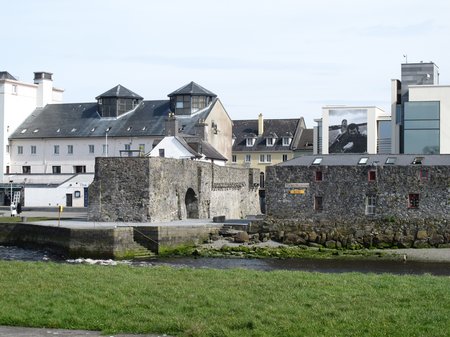
When I heard that there was a new museum focusing on the history of Galway City, I was eager to visit. The location of the museum, which you get to by walking through Spanish Arch – part of the original city walls built in the 1550s – could not be better for two reasons: firstly, in passing through this centuries-old gateway, your mind is immediately focused on the age of the city; and secondly, once inside the museum, there are beautiful views over the city and the bay from the top floor of the building.
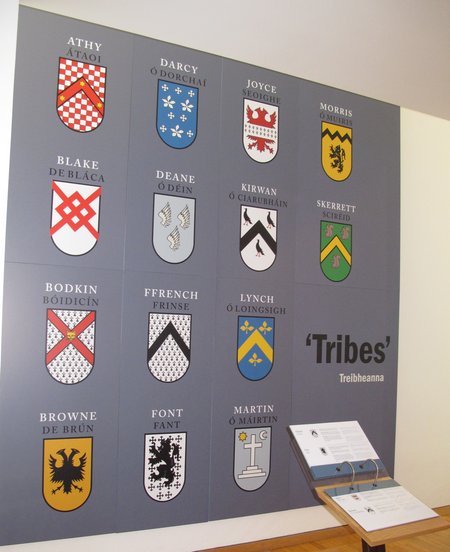
The museum houses a unique set of artifacts illustrating the history of the city mainly focusing on the late 19th and early 20th century. The display above, set in a small side room, provides information about the fourteen families, known as the “tribes” who were city leaders from the twelfth to fourteen centuries. These unusual names, mostly merchant families, included many Norman (i.e. from Normandy in France) families who had settled and prospered in the Galway area at that time. My boys found the coats-of-arms mildly interesting, but they were more curious as to why none of the names seemed “like a real Irish name” – I guess that when your last name is Murphy you can be condescending towards any other “supposed” Irish name.
In choosing to visit this museum, I’d hoped to learn more about the history of Galway city myself and to help my children learn more about this part of Ireland. It was ironic then, that the first exhibit space we walked into in the museum was “Looking West From Galway” a tribute to the John F. Kennedy’s visit to the city in 1963 with a focus on the Irish in America. CAM, a reluctant visitor, was tickled pink by the coincidence.
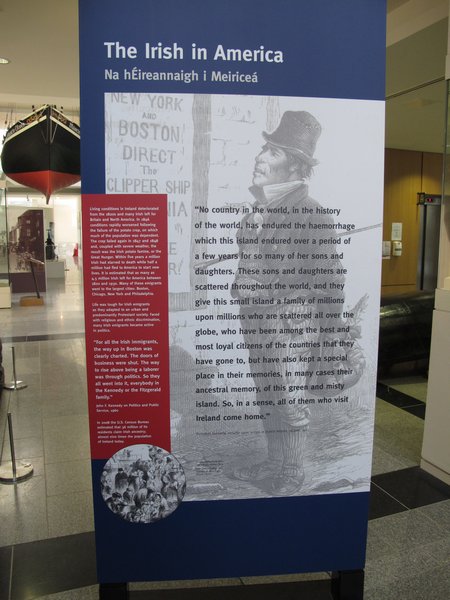
This temporary exhibit space leads to the permanent exhibits on the main floor where the history of this city is catalogued with a timeline presentation and many artifacts. For me, the most moving part of this exhibit was the population statistics. I know, I know, I’m a boring, numbers geek. But, I had no idea how much the Famine of 1847 had eviserated this area. In 1841 the population of Galway city and country was over 440,000. By 1901 it had dropped by over 56% due to death and emigration. For kicks, I looked up the current (2006) census data and discovered that even though the population of the city is now double what it was in 1841, the overall population for city and county is still only 52% of what it was before the Famine.
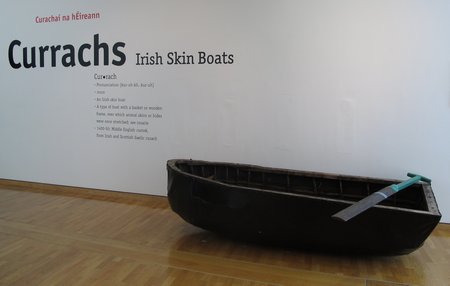
The exhibition on Currachs (Irish Skin Boats) on the second floor was the part of the museum which the boys found most interesting – and that’s probably because it had a short audio-visual presentation 
On the top floor, I found the Galway and The Wars of Empire exhibit fascinating. This thoughtfully constructed exhibit chronicled the involvement of Galwaymen – and women – in the wars of the British Empire from Napoleonic times to World War II and is a moving testament to the muddled history of Ireland. You can clearly see how things went from being a simple case of a regiment within the army to the mutiny at Jalandhar when news of the Irish War of Independence reached the Irishmen serving there.
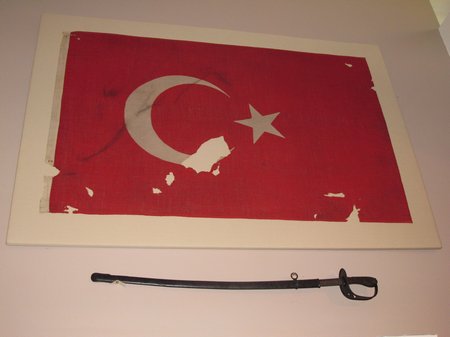
This sword and flag were captured by a soldier of the Connaught Rangers at Gallipoli. Given that while I was in Ireland with my kids learning about the Irish in Turkey, my good friend Debbie was in Turkey with her kids, I thought this an apt photo to take to capture the moment.
After such weighty historical considerations, the last exhibit in the museum, a display of local graffiti art was welcome visual distraction.
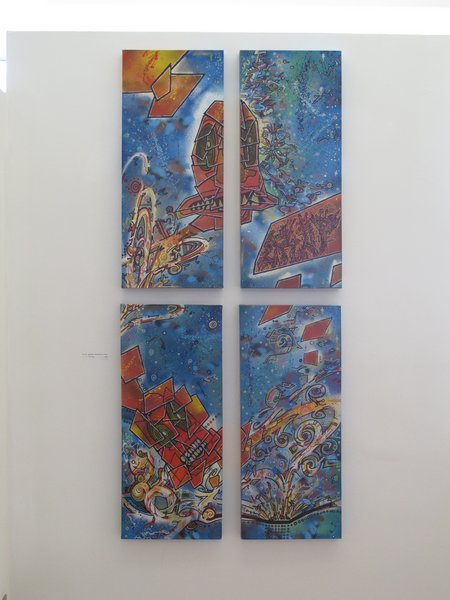
Like what you’ve read and interested in reading more? Subscribe to the WanderMom rss feed, follow me on Twitter or become a fan on Facebook.
Information on traveling to Ireland with kids.
Related Posts
[catlist tags=Ireland]

